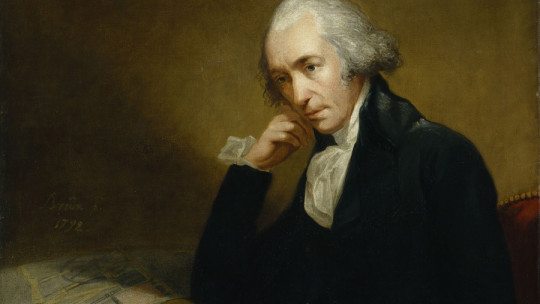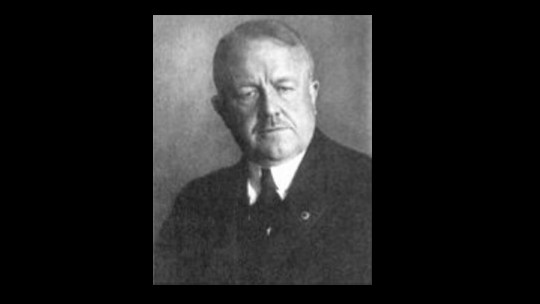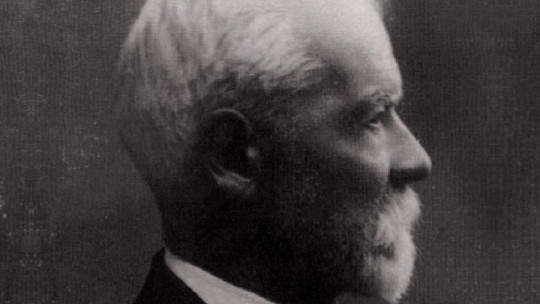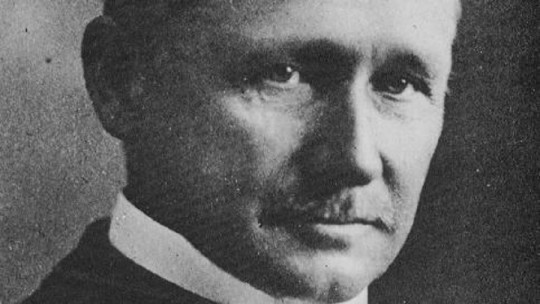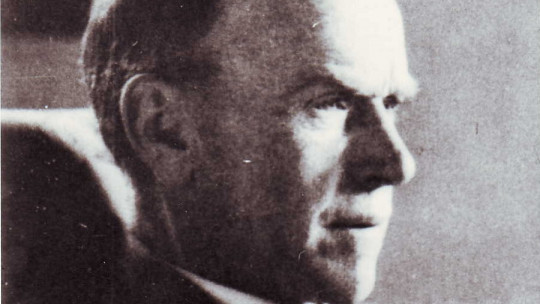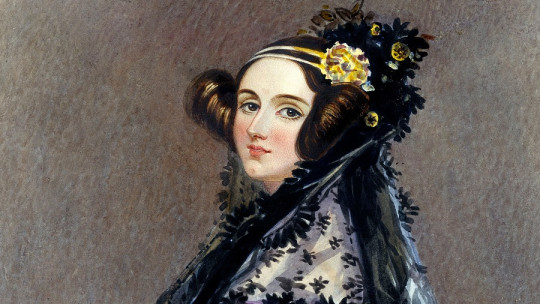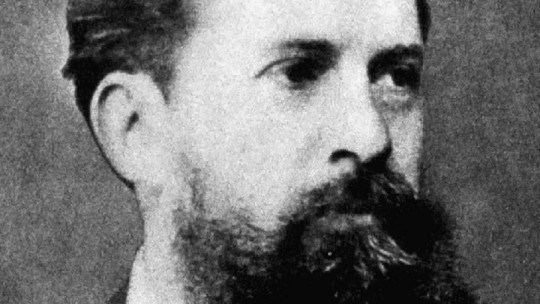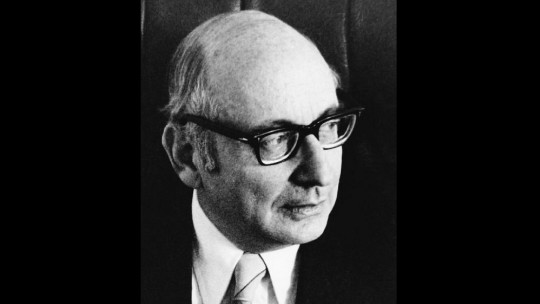The greatest invention that the 18th century could offer the world was the one that changed everything, a gadget that marked the before and after of industrial production and contributed to, in effect, starting the Industrial Revolution: the steam engine.
It had originally been developed by a certain Thomas Newcomen in 1712, but it was not until James Watt perfected it that the machine could be used to its maximum splendor, power and effectiveness.
Watt was a mechanical engineer, inventor and chemist who, if he had not existed, without a doubt the world we live in would be very different. Let’s find out what happened to his life in this James Watt biography
Brief biography of James Watt
James Watt was a Scottish mechanical engineer, inventor and chemist famous for having improved the Newcomen engine, giving rise to what we know today as the steam engine. Without the figure of Watt, the first Industrial Revolution would hardly have happened both in the UK and the rest of the world.
Childhood
James Watt born in Greenock, near Glasgow, Scotland, on January 19, 1736 His father, also named James Watt, was a naval inventor and contractor and his mother was Agnes Muirhead, coming from a distinguished and well-educated family. Her paternal grandfather was Thomas Watt, professor of mathematics and magistrate of the barony of Cartsburn.
James Watt’s childhood was that of a boy with a delicate state of health, preventing him from attending school regularly and being educated mainly by his mother at home. When he recovered somewhat, he was able to attend Greenock Grammar School. At school he demonstrated great manual dexterity and aptitude for mathematics unlike Latin and Greek, which did not interest him at all.
Youth as an apprentice
At the age of eighteen, his mother died and his father began to have health problems. It was then that James Watt traveled to London to become an apprentice measuring instrument maker during 1755 to 1756. Upon his return to Scotland, He established himself in Glasgow with the intention of creating his own measuring instrument manufacturing business There he made and repaired with his own hands brass reflective quadrants, parallel rulers, scales, parts for telescopes and barometers.
Despite his interest and aptitude, as he had not worked as an apprentice for the minimum seven years required by the Glasgow Blacksmiths’ Guild, his application to the guild was blocked. The most affected by this decision was the union itself, since there were no other makers of mathematical instruments in all of Scotland
Fortunately for Watt, this would change with the arrival of astronomical instruments from exotic Jamaica. Loaned by Alexander Macfarlane to the University of Glasgow, these instruments required the attention of experts, such as James Watt. The young engineer restored them for commissioning and was paid for it, making a place for himself in the world.
Watt as an entrepreneur
Subsequently, three professors from the University of Glasgow offered James Watt the opportunity to create a small workshop within the institution He started it in 1757 together with two of those professors, the physicist and chemist Joseph Black (introducer of the concept of latent heat) and the famous economist and philosopher Adam Smith, who soon became friends of Watt.
In 1759 He created a business partnership together with the architect and businessman John Craig The two intended to manufacture and sell a line of products that included both musical instruments and toys. The company functioned quite well for six years and employed up to sixteen workers. However, in 1765 Craig died and one of the employees, Alex Gardner, ended up taking over the business.
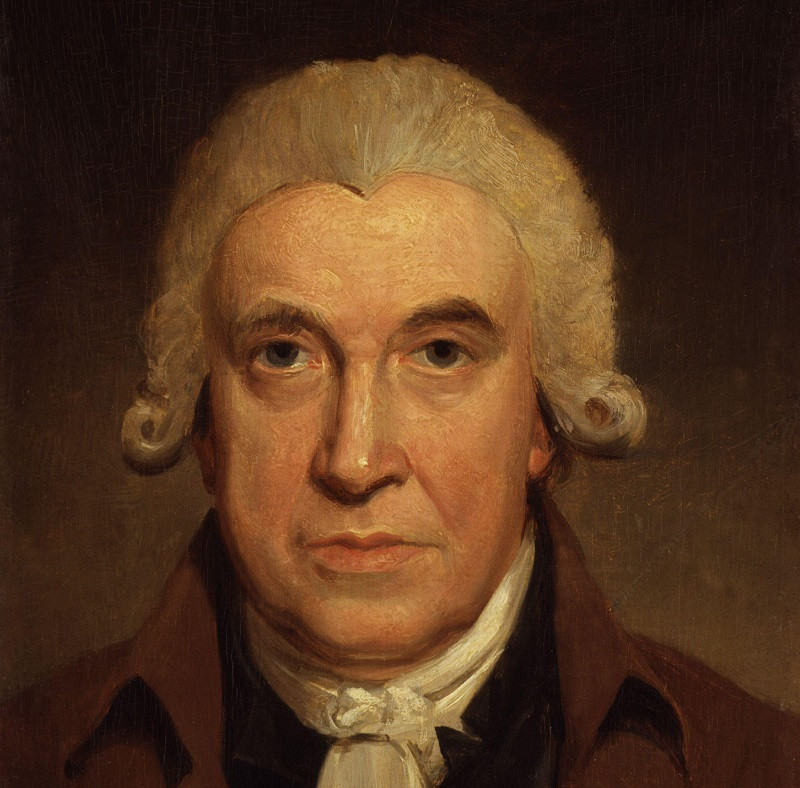
Personal life and last years
James Watt married his cousin Margaret (Peggy) Miller in 1764, with whom he had five children , two of whom lived to adulthood: James Jr. (1769–1848) and Margaret (1767–1796). Eight years later, in 1772, to Watt’s misfortune, his beloved wife died giving birth to her fifth child.
In 1777 Watt He remarried, this time to Ann MacGregor , daughter of a Glasgow dye manufacturer. With her he had two children: Gregory (1777–1804), who became a geologist and mineralogist, and Janet (1779–1794). Both James and Ann outlived her children, she dying in 1832.
James Watt lived in Regent Place, Birmingham (England) between 1777 and 1790. There He was a prominent member of the local Lunar Society an English gentlemen’s club whose main interest revolved around science.
James Watt died on August 25, 1819 in Heathfield, in his luxurious and comfortable mansion located in Handsworth, England, due to tuberculosis. He was 83 years old
Achievements as an engineer
What is undoubtedly James Watt’s greatest achievement is inventing the steam engine, or rather, perfecting it from Thomas Newcomen’s first machine. What Watt did was turn it into a viable and economical energy production contraption. Watt discovered that Newcomen’s engine was spending about three-quarters of the steam’s energy heating the piston and cylinder.
To improve performance, Watt developed a separate condensation chamber that significantly increased its power This represented a true scientific and economic advance, something that Watt knew how to take economic advantage of. In 1795 he opened with Matthew Boulton the Soho Foundry in Birmingham, a foundry and factory specializing in the manufacture of steam engines. Thanks to this, it became gold.
One of the most striking aspects of Watt is his frontal opposition to the use of high-pressure steam. Some consider this fact as something that slowed down the development of the steam engine by other engineers, until they were able to work freely when the patents expired in 1800. The feat he carried out together with his partner Boulton against rival engineers such as Jonathan Hornblower is well known. , who tried to develop machines far from Watt’s patents.
Another of James Watt’s achievements is the invention of a unit, the horse of steam , used to compare the power of different steam engines. It is still used today, especially for vehicles.
- You may be interested: “The 15 types of research (and characteristics)”
What was his personality like?
James Watt would not have become a scientist if he had not possessed the ability to combine the theoretical knowledge of science with the ability to apply it in practice. He was not only a great practical mechanic, but also a very good chemist and natural philosopher, whose inventions demonstrated his deep knowledge of various natural sciences. His genius, capable of uniting the knowledge he extracted from diverse sciences, helped him apply it in the form of great inventions. Furthermore, he was an excellent draftsman.
His star invention, the steam engine, allowed him to rub shoulders with the most prominent men of the English Industrial Revolution His fellow members of the Birmingham Lunar Society described him as a sought-after conversationalist and companion, always interested in expanding his knowledge. His personal friends described him as a nice man.
Despite being a great genius, he did not stop being human and had a weak point: business. For James Watt, everything that was haggling and negotiating conditions with those who wanted to use his steam engine was a bad experience. He didn’t like to talk about finances. Even so, he always cared a lot about his financial affairs until he retired.
Despite his great intellectual and scientific productivity, James Watt suffered from frequent attacks of depression and nervous headaches.
Recognitions
James Watt received several awards throughout his life. In 1784 he was made a member of the Royal Society of Edinburgh and in 1787 he was admitted as a member of the Batavian Society of Experimental Philosophy (Bataafsch Genootschap voor Proefondervindelijke Wijsbegeerte) of Rotterdam, Netherlands.
In 1789 he was fortunate to join an elite group, the Smeatonian Society of Civil Engineers, the first association of its kind. In 1806 he was awarded an Honorary Doctorate of Laws from the University of Glasgow. In 1814 he was appointed member of the French Academy of Sciences as a foreign associate.
The unit of electrical power, the Watt, is named in his honor This measurement was adopted by the Second Congress of the British Association for the Advancement of Science in 1889 and by the 11th General Conference on Weights and Measures in 1960 as the unit of power incorporated into the International System of Units.

